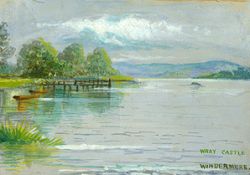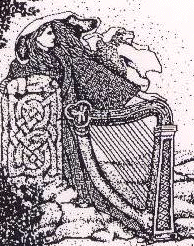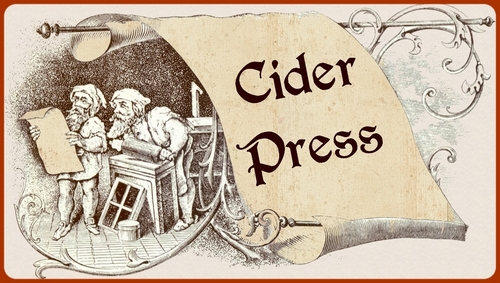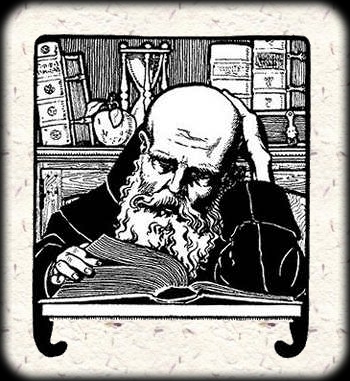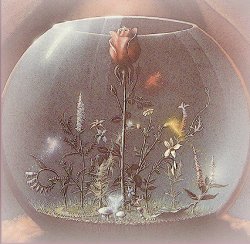The music of one of the
"Last Hereditary Bards"
James William Carling, poet, artist, musician, painter, philosopher, songwriter...... referred to himself as one of the "last hereditary bards".
He was born into a very poor family on New Year's Eve in 1857 to Rose and Henry Carling in the "Irish Quarter'' in Liverpool.
His father Henry was a singer and composer of songs, ballads and poems, and by trade a blacking maker, as was his father before him. There was music, song and talent in the family, both in the present and the ancestors.
His mother Rose died quite young. After this his life became difficult as his father apparently remarried a rather odd woman, of whom James later wrote, "Starved by a stepmother of very unusual disposition, I sallied out in the world like Jack of the fairy tales to seek my fortune, and a living as well, at the ripe old age of five.''Thus began his long and varied experiences as a street artist and performer on the streets. With his older brothers, Willy, Johnny and Henry, James became a street artist, competing for survival with many other homeless urchins who danced, sang, juggled, played music, recited poems and did many other tricks and performances, and sadly often died very young.
One of James specialties amused passerbys with caricatures of prizefighters. James also specialized in turning out likenesses of the great figures from recent history in seconds - Napoleon, Abraham Lincoln, George Washington. But, as he couldn't yet read or write, he had to call out their name
The brothers were talented and creative artists, and they were smart and wily, moving from place to place to avoid harassment and beatings from the "Peelers", who thought they should not be seen by respectable folk.
In 1865, James was arrested as a beggar while chalking street art in an attempt to raise money for the Christmas time holidays.
He was then sentenced to six years at St George's Industrial School, Liverpool, where the headmaster, Father James Nugent, fostered the boy's love of art, literature and drama.
At the age of 14, James was set free and he traveled to America where so many Irish before him would go, to Philadelphia to join his brother, Henry, back on the ``sidewalks'' creating street art. But this time things were different, and their street art was admired and praised.
After the appearance of a newspaper article about the speed and quality of his art, James was recruited and signed up to appear and travel with a troupe of the best "lightning caricaturists'' which toured the USA.
While James was off touring, his brother Henry opened an art studio in Chicago. Jim eventually joined him. In 1883, he learned that Harper's Magazine was running a competition for illustrations to be used in a new edition of Poe's The Raven. James considered Edgar Allen Poe to be one the greatest writers. James created over 40 and entered 33 excellent drawings in the contest. But he lost out to the famous Gustav Dor, who had already illustrated many publications including editions of The Bible and Milton's Paradise Lost.
Dispirited, James painted, composed and wrote in the USA for another four years.
He returned to England, hoping to study at the National School of Art in London but this was not to happen. He fell ill and returned to Liverpool, penniless. He was sent to a workhouse, where he died.
He hadn't been much of a burden for the pall-bearers. "Little Chalkie' as he was called as a boy, died in a workhouse workhouse from hunger, aged 29.
His body was laid beside 14 other paupers in the ground beneath a sycamore tree, and the scattering of mourners on that July morning in 1887 didn't know they were burying a genius.His brother Henry had kept his drawings for The Raven, which he showed at an exhibition in 1930. Six years later, his daughter, Stella, presented the illustrations to the Edgar Allan Poe Museum, Richmond, where they remain. They are now so valuable only copies are on display.
Before he passed away, in 1884 a collection was compiled and published of his scientific, poetic, metaphysical writings and some musical examples of his and his father's work.
All art on this page was painted or drawn by James Willing Carling.
The written description of his life was posted without attribution in an old Usenet news group, so the original writer is unknown.
Download The Music of one of the
"Last Hereditary Bards"
I have arranged 5 pieces of music transcribed from the handwritten (often difficult to decipher) melodies of James Carling, as he says, one of the "the last hereditary bards".
The PDF file offered on this page contains these 5 transcriptions arranged with simple piano chords and named guitar chords. These basic music arrangements can be used as a basis to create many versions of these unusual melodies.
The MP3 files offered on this page are arranged and recorded examples of these unique melodies.
The Music of one of the
"Last Hereditary Bards"
$3.50After your payment is processed you will quickly be sent by email the download link.
MP3 sample arrangements
of 4 of these melodies.
Visit the Cider Press
Early American music,
unusual & unique music,
and ephemera collection.
including the music of the spheres, the music of a Renaissance alchemist, music created by software and artificial intelligence, the music of the fairies, the music of the Illuminati, the world's most mysterious book, the world's oldest song, a way you can compose music like Mozart, the world's oldest love song,
and much more........
© 2015 - Amaranth Publishing
All rights reserved
